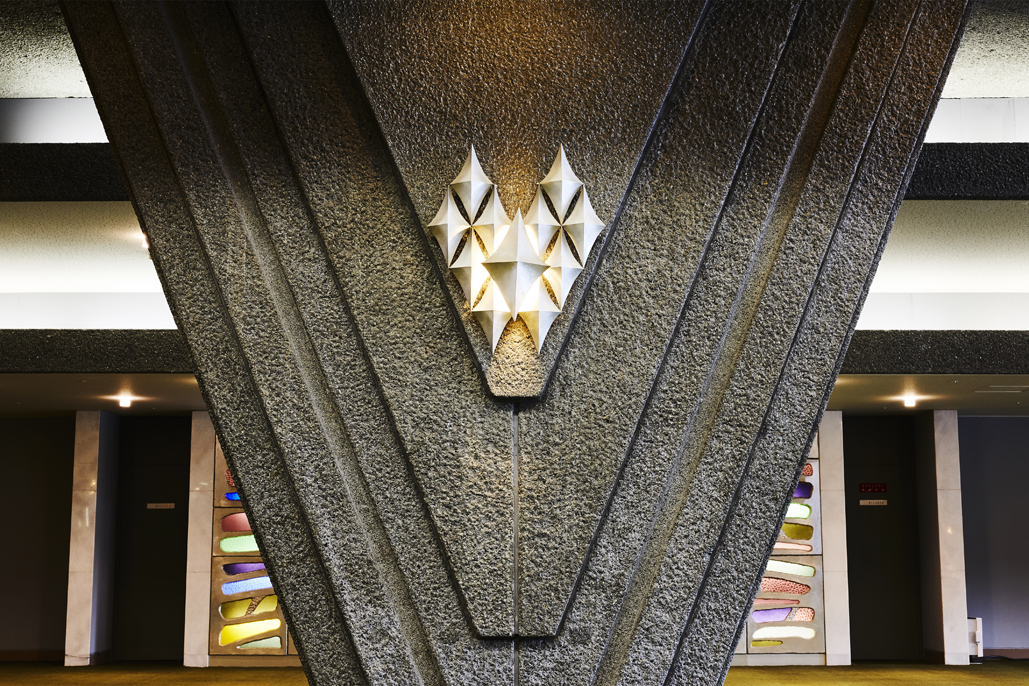国立京都国際会館について > アートツアー > 手斫の壁・柱 Hand-finished walls and pillars

8手斫の壁・柱 Hand-finished walls and pillars

ごつごつとした風合いのコンクリートの壁や柱は、とても印象的ではないだろうか。これは「叩き仕上げ」と呼ばれる工法で、コンクリートに砕石*1 と少量の墨を混ぜて打設したコンクリートと、プレキャストコンクリートの部材を職人が現場で専用のハンマーを使い手作業で斫った(はつった)*2 ものである。打ち放しのコンクリート*3 にはない、独特の温かみを醸し出している。
後に建築家 大谷 幸夫氏は、この時の職人の顔が忘れられないと語っていた。
*1 叩き仕上げのために、通常のコンクリートに砕石を追加で入れている。
*2 斫る:たがねやハンマーなどを使用してコンクリート表面を削る作業。
*3 打ち放しのコンクリートとは、コンクリートの躯体をそのまま見せる仕上げ方法の一つ。
The rough finish of the concrete walls and pillars leaves quite an impression. The surface was created with a procedure called “bush hammering.” Using a special hammer, craftsmen chipped the poured concrete (mixed with crushed stone and a little bit of ink) and precast concrete parts by hand on-site.
The process creates a distinct warmth that cannot be found in exposed concrete.
Architect Sachio Otani later said that he would never forget the faces of the craftsmen at work.

